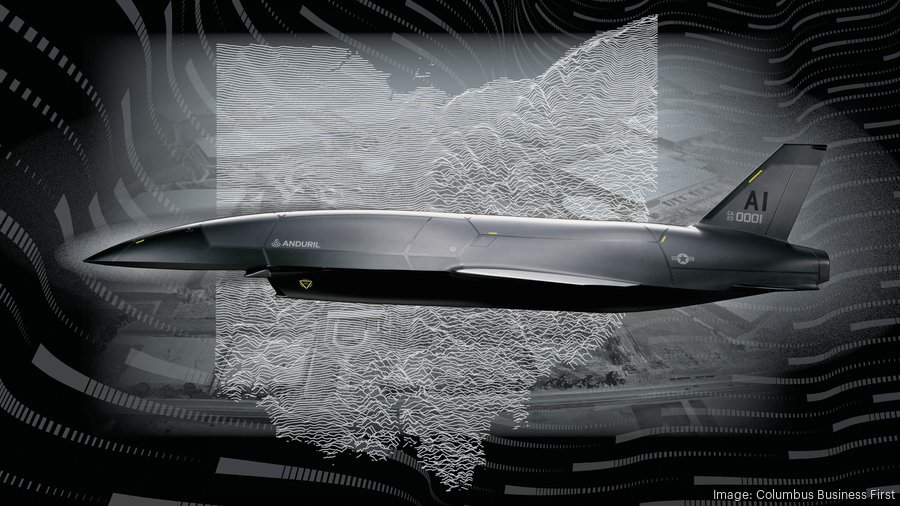Material Densification: The Forgotten Revolution in American Manufacturing
Discover how material densification and vacuum electron beam welding are unlocking the next industrial revolution. From nuclear reactors to next-generation aerospace drones, this article explains how advanced manufacturing can transform Ohio into America’s new innovation hub — bridging the gap between the laboratory and large-scale production.
NEWSADVANCED MANUFACTURING TECHNOLOGIES
Miranda Morrow
10/24/20254 min read


The Rise of the Advanced Manufacturing Age
Every great industrial leap has been defined by one thing: density. The densification of fuel gave us the Industrial Revolution. The densification of information gave us the Digital Revolution. And now, material densification — the process of compacting and refining metal structures at the atomic level — is setting the stage for the next American revolution: the Manufacturing Renaissance.
Material densification fundamentally alters the internal grain structure of alloys and metals. It removes voids, compresses imperfections, and creates a lattice of atomic precision. When this process is applied — through powder metallurgy, hot isostatic pressing, or advanced sintering — it forges materials that are stronger, lighter, and more heat-resistant than their conventionally forged counterparts.
The implication is staggering: with densified metals, one can build less, to do more. A kilogram of densified titanium can outperform several kilograms of cast or milled titanium alloy — meaning lighter vehicles, sturdier hulls, and greater performance margins.
When Densification Meets the Electron Beam
Pair this with vacuum chamber electron beam welding — a process that fuses metals under high vacuum using focused electron streams — and the possibilities multiply exponentially. Unlike traditional welding, which leaves microscopic seams, impurities, and thermal distortion, electron beam welding creates bonds so pure they are virtually indistinguishable from a single monolithic crystal.
Imagine a future aircraft or spacecraft whose joints don’t exist. Where the wing, fuselage, and frame flow together as one continuous piece of metallurgical perfection. When densified materials are welded under vacuum, the grain boundaries align, stress concentrations vanish, and the result is a seamless, heat-tolerant structure that can operate at temperatures and pressures unthinkable just a decade ago.
This is not speculative futurism — it’s metallurgy’s equivalent of nuclear fission. Controlled, powerful, and world-changing.
From Aeroframe to Spaceframe
The implications are nowhere more profound than in aerospace and defense. Current manufacturing techniques were developed for human-piloted aircraft — and human beings are the weakest component in that system. No pilot can survive 20 g’s of acceleration, so why design a fuselage capable of withstanding 50? The limits of metallurgy have, until now, been bound by the biology of the pilot.
But remove the pilot, and you remove the constraint.
With advanced densified alloys and electron beam joining, Ohio — already home to NASA Glenn, NASA Armstrong, and a dense network of advanced manufacturing enterprises along the I-90 and Route 2 corridor — stands poised to become the birthplace of the spaceframe: an aeroframe built not for flight, but for the transition between atmosphere and space.
This is the architecture of the next generation of autonomous drones and pilotless spacecraft — vehicles that can maneuver through hypersonic flight envelopes, reenter the atmosphere, and endure stress loads beyond anything our current materials can handle.
Expanding the Frontier: Nuclear, Military, and Resource Extraction
The applications don’t stop at aerospace. The same principles of densification and electron beam fusion are revolutionizing:
Nuclear reactors, where densified alloys resist radiation embrittlement and thermal fatigue.
Petroleum and mining rigs, which demand materials that thrive under high pressure, corrosion, and heat.
Military vehicles, from submarines to battle drones, where strength-to-weight ratios define survivability.
Advanced coatings and vapor deposition technologies, such as electrospark alloying and physical vapor deposition (PVD), which provide ultra-hard, corrosion-resistant exteriors to these densified structures.
Combine these methods with 3D printing and sintered additive manufacturing, and the result is not just incremental progress — it’s a leap toward near-limitless material design. Humanity stands on the threshold of fabricating machines capable of surviving Venusian pressure or Martian dust storms.
Ohio: The Perfect Forge for a New Manufacturing Revolution
Ohio is uniquely positioned to lead this next wave. The state already houses a rare intersection of aerospace, nuclear, and industrial capability. Between its universities, NASA centers, and two operational nuclear plants, Ohio’s industrial DNA is inherently interdisciplinary — the exact genetic code required for innovation hubs that blur the lines between physics, metallurgy, and engineering.
What’s missing is infrastructure for innovation itself. America doesn’t need another laboratory; it needs an Advanced Manufacturing Innovation Hub — a modern “Skunk Works” built not for endless research papers but for rapid prototyping and commercialization. A place where densified materials can move from lab-scale proof to pre-production models within months, not years.
Lockheed’s legendary Skunk Works proved what’s possible when innovation bypasses bureaucracy. China, recognizing this, has created dozens of such innovation hubs. The U.S. — and specifically Ohio — must do the same, or risk ceding the 21st-century manufacturing frontier.
Breaking the Monopoly of Innovation
During the Manhattan Project, the U.S. government created a functional monopoly on nuclear technology out of necessity. But as costs balloon in nuclear, aerospace, and defense development, monopolies have become a hindrance, not a help. They stifle innovation and restrict competition.
The federal government’s role today should not be to own innovation, but to incubate it — through shared infrastructure, materials processing centers, and advanced prototyping facilities. Just as it once provided enriched uranium for civilian reactors in Ohio, Kentucky, and Tennessee, it can now provide enriched innovation infrastructure for densified materials and electron-beam manufacturing.
This would break the logjam of corporate consolidation, returning America to a truly competitive manufacturing ecosystem — one where bold ideas are rewarded, not buried under the weight of monopoly inertia.
The Advanced Manufacturing Future
Material densification and advanced joining techniques aren’t just about better metals — they’re about reclaiming industrial sovereignty. They represent the physical manifestation of human will over nature’s limitations.
The next age of manufacturing will belong to the regions that master density and precision. Ohio can be that forge — the state where the impossible becomes practical, where the aeroframe becomes the spaceframe, and where the machines that touch the stars are born.
And just perhaps, in the quiet hum of an electron beam chamber somewhere near Cleveland, the next great leap for mankind will begin — not with a spark, but with a weld.


By Miranda Morrow


